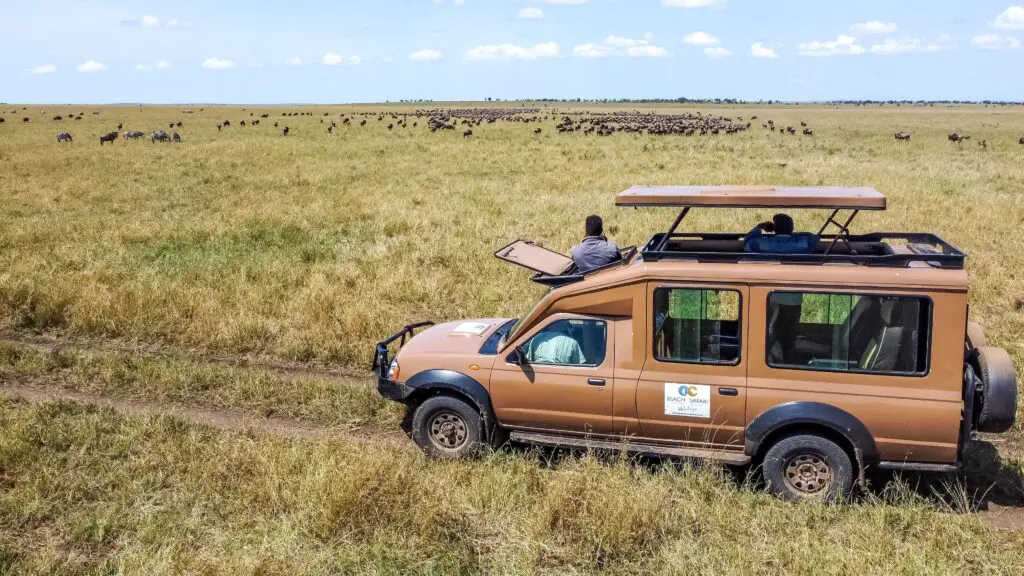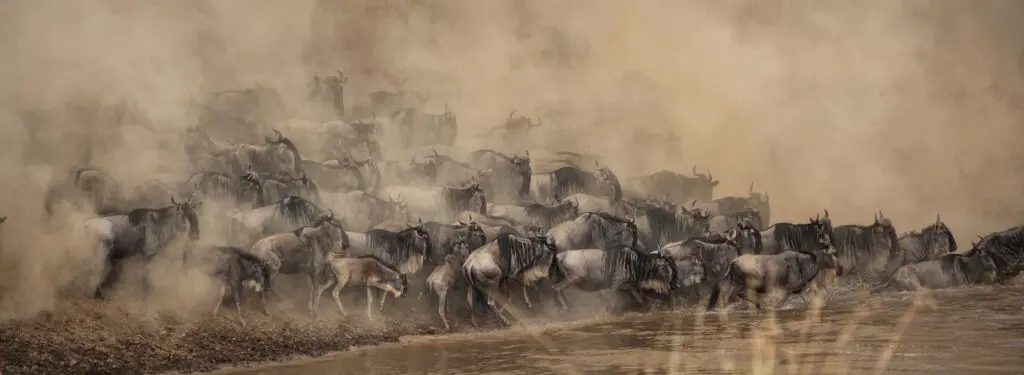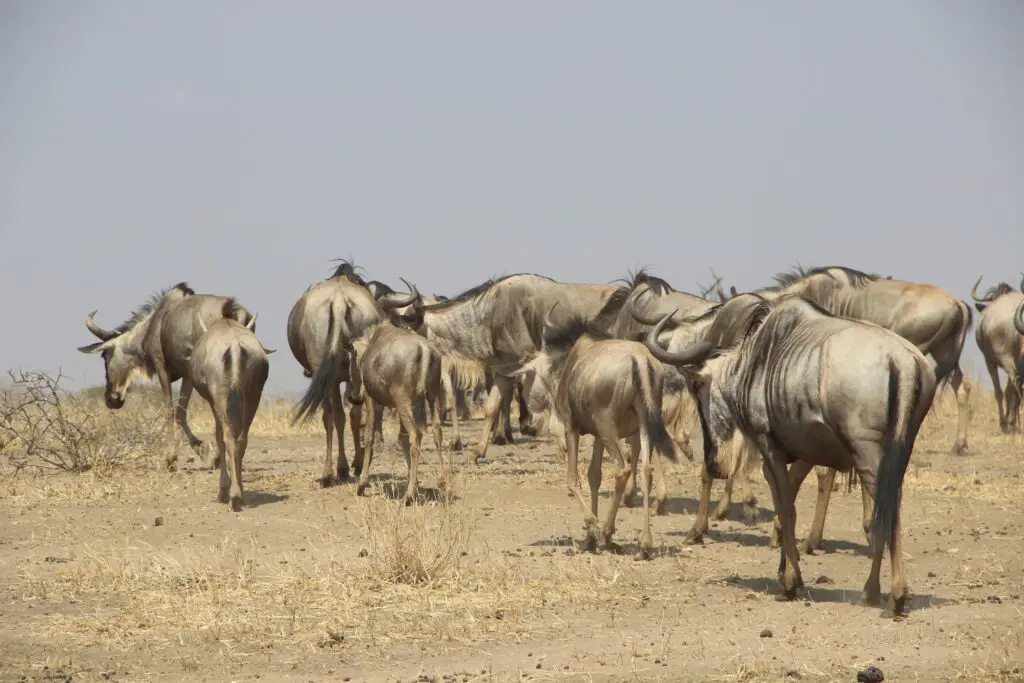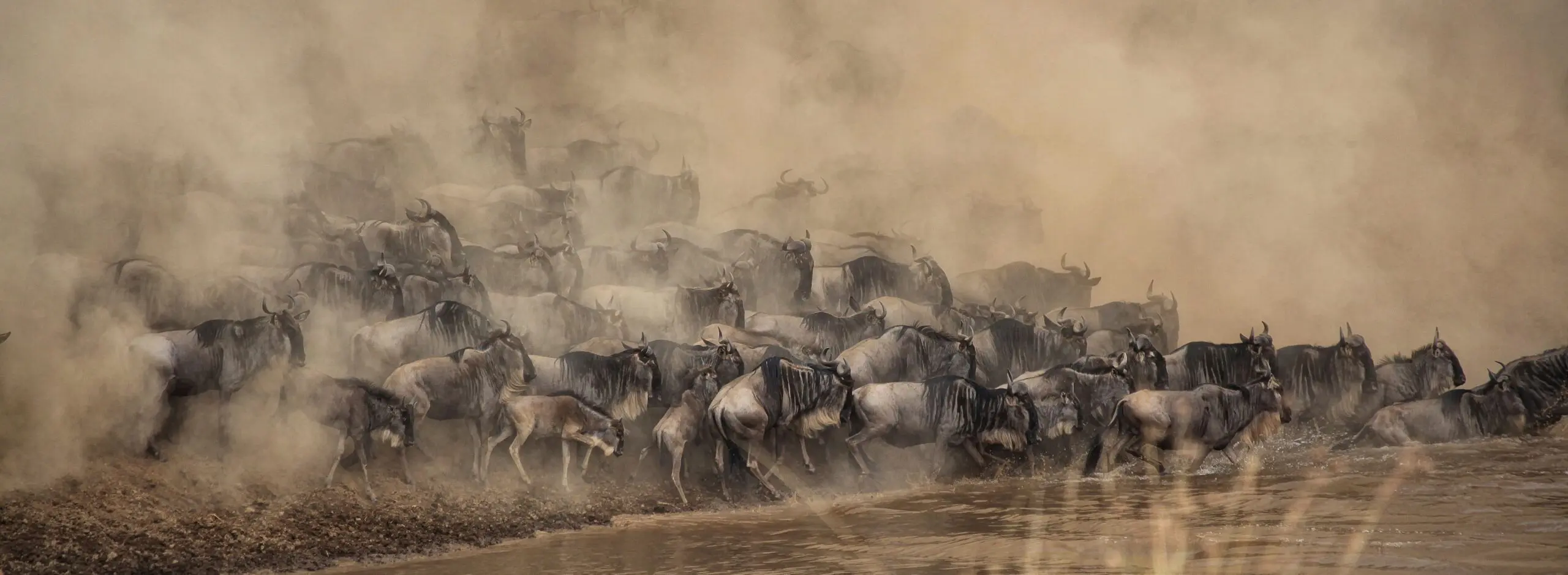
The great migration
The most beautiful wildlife wonder of the world
The Great Migration is perhaps the most beautiful and extraordinary natural wonder in the world. More than 2 million wild wildebeest and zebra migrating through various nature reserves in Tanzania and Kenya. While the great migration mainly takes place in the Serengeti National Park, it also passes through a number of other areas. In this article, we take you through the great migration and where you have the greatest chance of witnessing it.
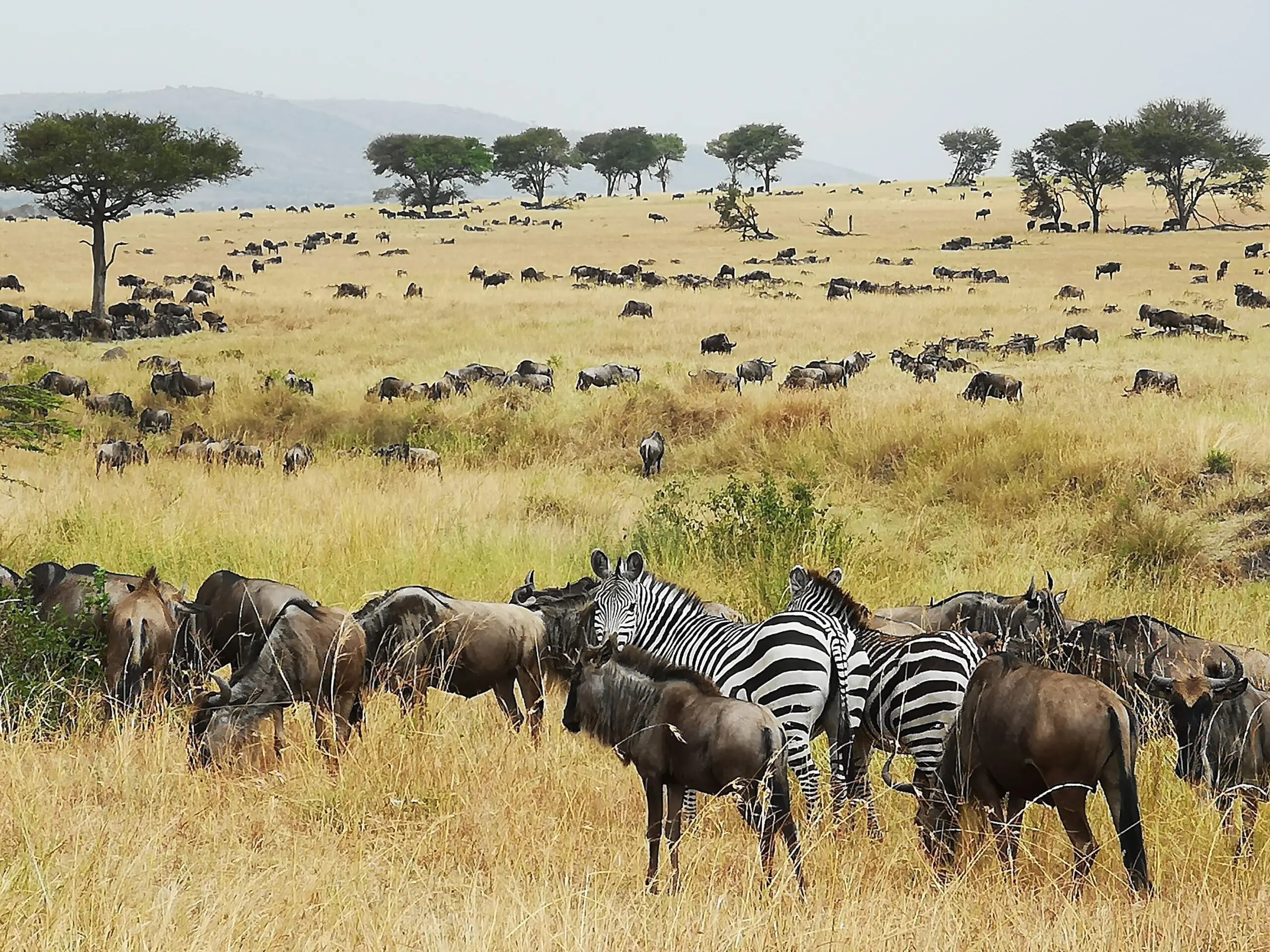

The great migration of 2 million wildebeest
More than 2 million wildebeest migrate across part of Tanzania and Kenya each year in search of fresh grass and a place to give birth to calves and foals. Witnessing this spectacular event is high on many people’s wish list. The great migration makes for extraordinary sights. The groups can get as long as 40 km and then have to cross the Mara River. You can also see around these groups many animals that see the wildebeest as prey. From hunting lions to waiting crocodiles, the great migration has it all.
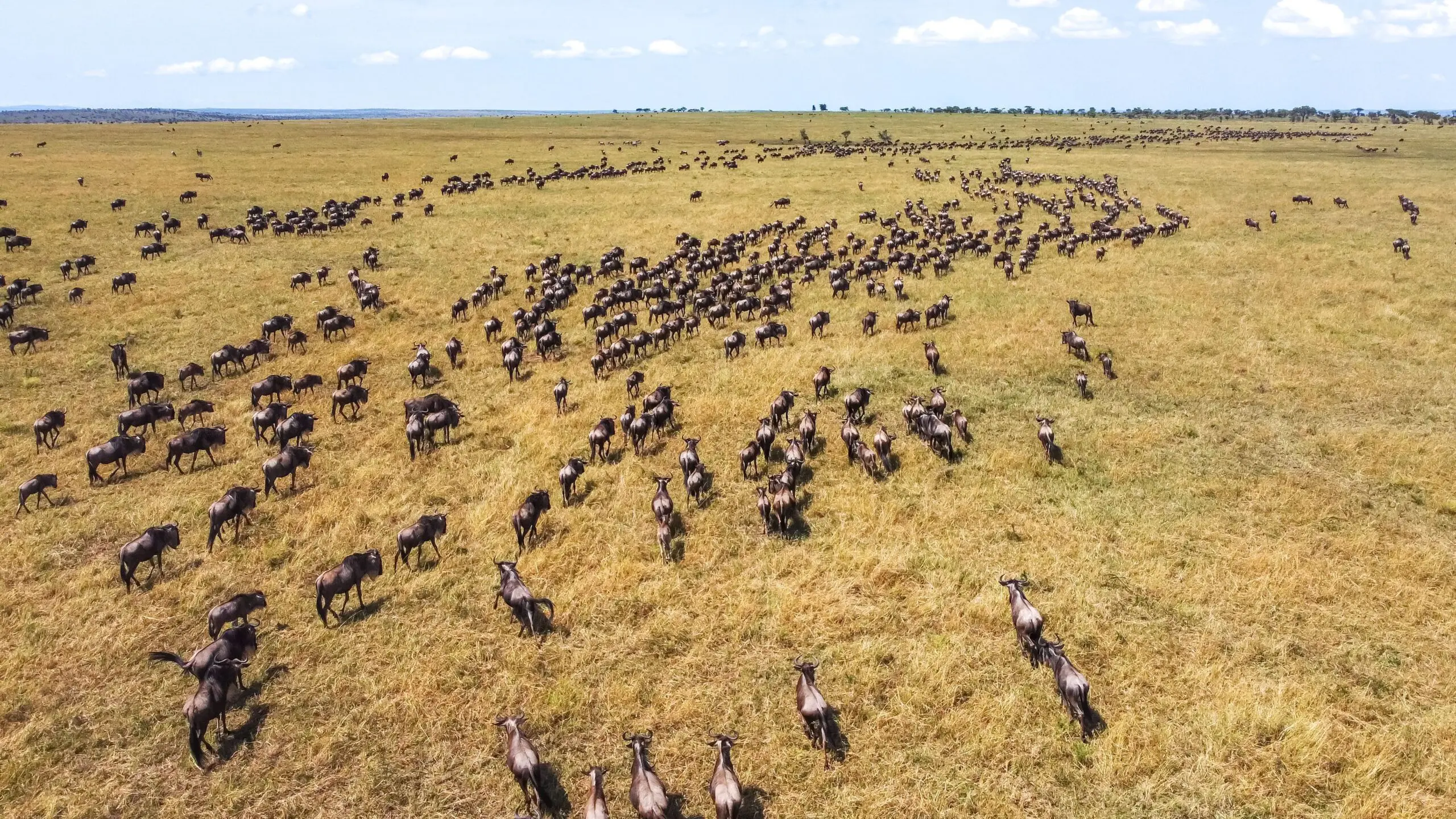
The Great Migration in Tanzania
Thus, most of the great migration takes place in Serengeti National Park. In addition to this nature park, the great migration also moves through:
- Ngorongoro Conservation Area
- Maswa Game Reserve
- Maasai Mara National Park (Kenya)
In these areas, the Great Migration encounters a number of rivers that must be crossed. Because this is such an impressive sight we have put below the rivers they encounter.
- Grumeti River
- Mbalageti River
- Mara River
- Talek River
The great migration a very impressive spectacle
Throughout the entire great migration you will continue to encounter unique sights. Just imagine how the animals huddle together at night for protection from predatory animals like lions and hyenas. Or witness how the herds cross the rivers in elongated groups while crocodiles lie in wait and hippos stand by watching. Everything about the great migration is impressive, from the smells that waft through the air, the number of animals roaming around, to the trembling undergrounds as a large group thunders past. In our eyes, witnessing this natural spectacle is one of the most beautiful things to experience.
When is the great migration where?
To provide insight into the great migration, we will take you through where it takes place at what time of year. This migration pattern may vary, it all depends on when it starts raining.
January
In January, the great migration gathers in the so-called Ndutu area. This is still officially part of Ngorongoro Conservation Area, although it is considered by many to be the South Serengeti. This area has plenty of fresh grass due to the past rainy season. This nutritious grass is good for all the female wildebeest and zebra that are about to give birth to their calves and foals. At the end of January, the first calves and foals begin to arrive and over 500,00 calves and foals are born here over the course of several weeks.
Did you know that in January
- Baby wildebeest can stand up in as little as 7 minutes
- Baby wildebeest able to ride hard after only 2 days
- 90% of all females deliver a calf
- You also have a chance of spotting small zebras in this area
February
The great migration is still in Ndutu Area during this period. February is considered one of the most important months of the great migration. Most of the 500,000 calves are born during this month. After they are born, the calves are prepared in this month for the long trek that awaits them. This month also sees many predators lurking around looking for easy meals. The calves and foals are generally not in much danger yet because there is too much food for the predators.
Did you know that in February
- There are nearly 2 million wildebeest currently roaming this area
- There are also 800,000 zebras running through the wildebeests
March
The amount of grass in Ndutu Area is beginning to run out and the great migration is slowly departing towards Maswa Game Reserve (Southern Serengeti). The young wildebeest and zebra are also strong enough to join and the search for new food is about to begin.
April/May
In April and May, the great migrants depart for the central and western parts of the Serengeti. Here they prepare for the toughest part of their journey. This is a period when long rainstorms pour from the sky, but also the mating season begins.
June
Large herds of wildebeest and zebra have merged into one mega herd. All because they are facing their first real challenge of the year. The crossing of the Grumeti River. A real challenge because this river is full of crocodiles and hippos.
July and August
The strongest animals have overcome the first challenge, but that was not it. Indeed, in the trek to the Northern Serengeti, they encountered another obstacle: the Mara River. A notorious river known for huge numbers of crocodiles and a strong current. Crossing this river is even more dangerous than crossing the Grumeti River. When not needed, many wildebeest also decide not to cross the river. In recent years, more than half of the great migration decided it was not necessary because the grass in the area was still good enough. The safaris at this time of year are often very impressive and sensational. However, many safaris do often have a dramatic edge.
September
The crossing is over and the search for new fresh grass can begin again. Many loose herds are forming across the northern Serengeti. This is a good time to spot many large herds of animals. Some of the herds also cross the border here into the Masai Mara National Park (Kenya). They do this because there is also plenty of fresh grass to be found here during this period.
October and November
During this period, the herds begin the trek south of the Serengeti again. They migrate through the eastern part of the Serengeti and they try to be in the south when the rains begin to fall again. The rain causes the fresh grass to start growing again and the pregnant females can start preparing for the birth of their calves.
December
The great migration arrives again where they left off at the beginning of the year. Young wildebeest that survived the trek are now adult animals. The fresh juicy grass helps the pregnant females become strong enough to give birth to their calves. Predators also know that the calves are coming and these also head toward the region where the wildebeest are.
Coming full circle
Although we see this as the start of a new great migration, of course this is not so. It is an endless circle that actually has no beginning or end. Wildebeest are animals that chase the rain throughout the year in search of fresh grass. For us, the great migration has some wonderful sights and we make sure that you can experience them with our tours. Take a look at our tours to see if there is a trip for you.
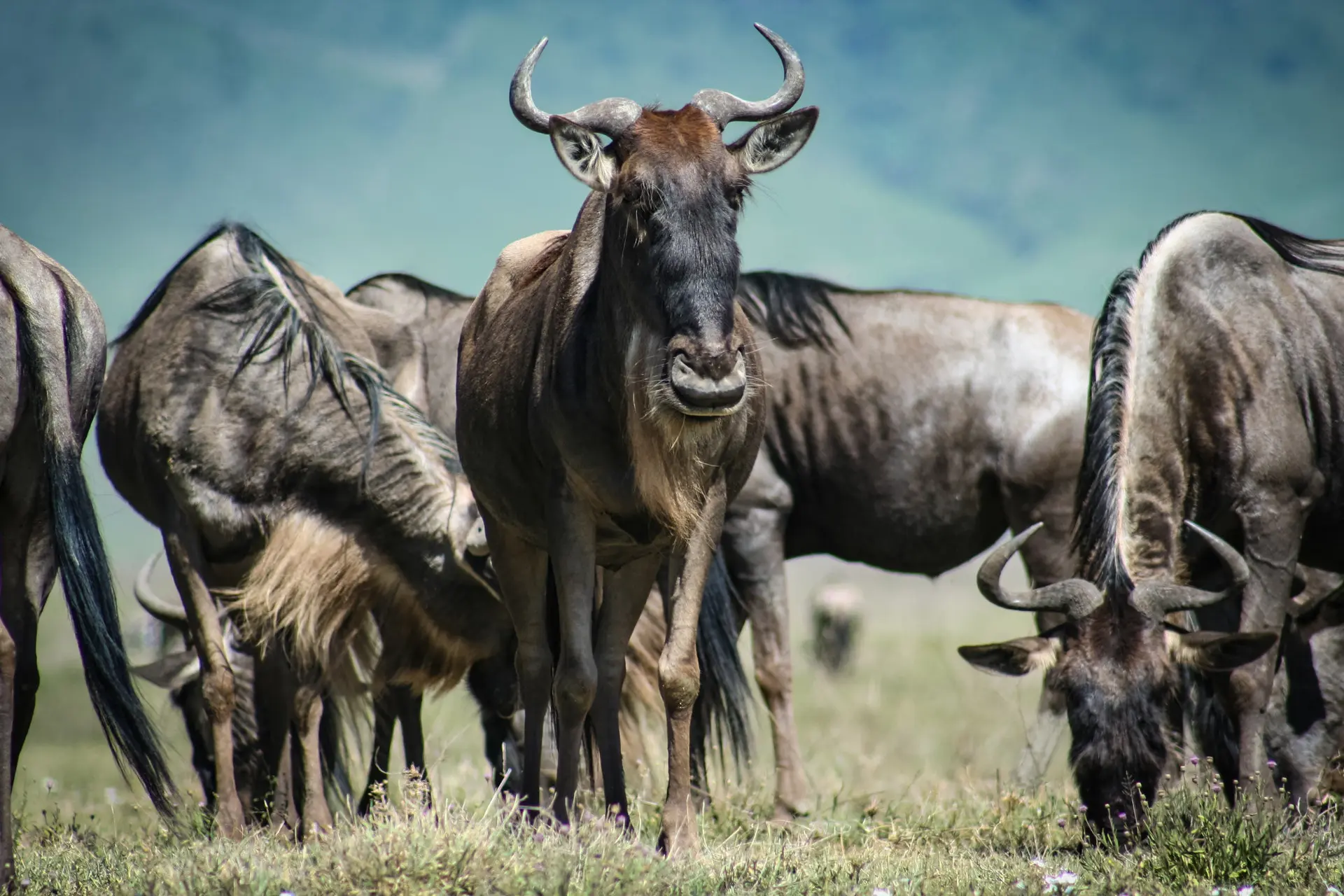
Best travel time Great Migration
In our opinion, there are some real highlights of the great migration: The birth season of the wildebeest and zebras and the rivers to be crossed. But that does not change the fact that the other sights of the great migration are not highlights. So we say: come see the great migration all year round! Each month is unique, so no matter when you come, you will feast your eyes.
Every migration is different
Pay close attention: The picture we have painted above is a global route of the great migration. It may of course vary because we have no influence on the behavior of these magnificent animals. In addition, the areas where these animals roam are huge and it can sometimes be difficult to find them. You are therefore always a bit dependent on a bit of luck. Fortunately, it does help that we employ experienced private drivers who generally have great success in finding the big migration.
The Great Migration: facts and figures
- In all, more than 3 million animals migrate around the Serengeti. These are mostly wildebeest, but zebras and gazelles also join them.
- Over 500,000 young wildebeest are born in January and February.
- Each animal travels about 1,000 kilometers during the great migration.
- Zebras, wildebeests and gazelles can live together peacefully.
- Zebras and wildebeest work together throughout the great migration. Zebras know the routes by heart(hoof) and wildebeest are extremely good at finding water sources.
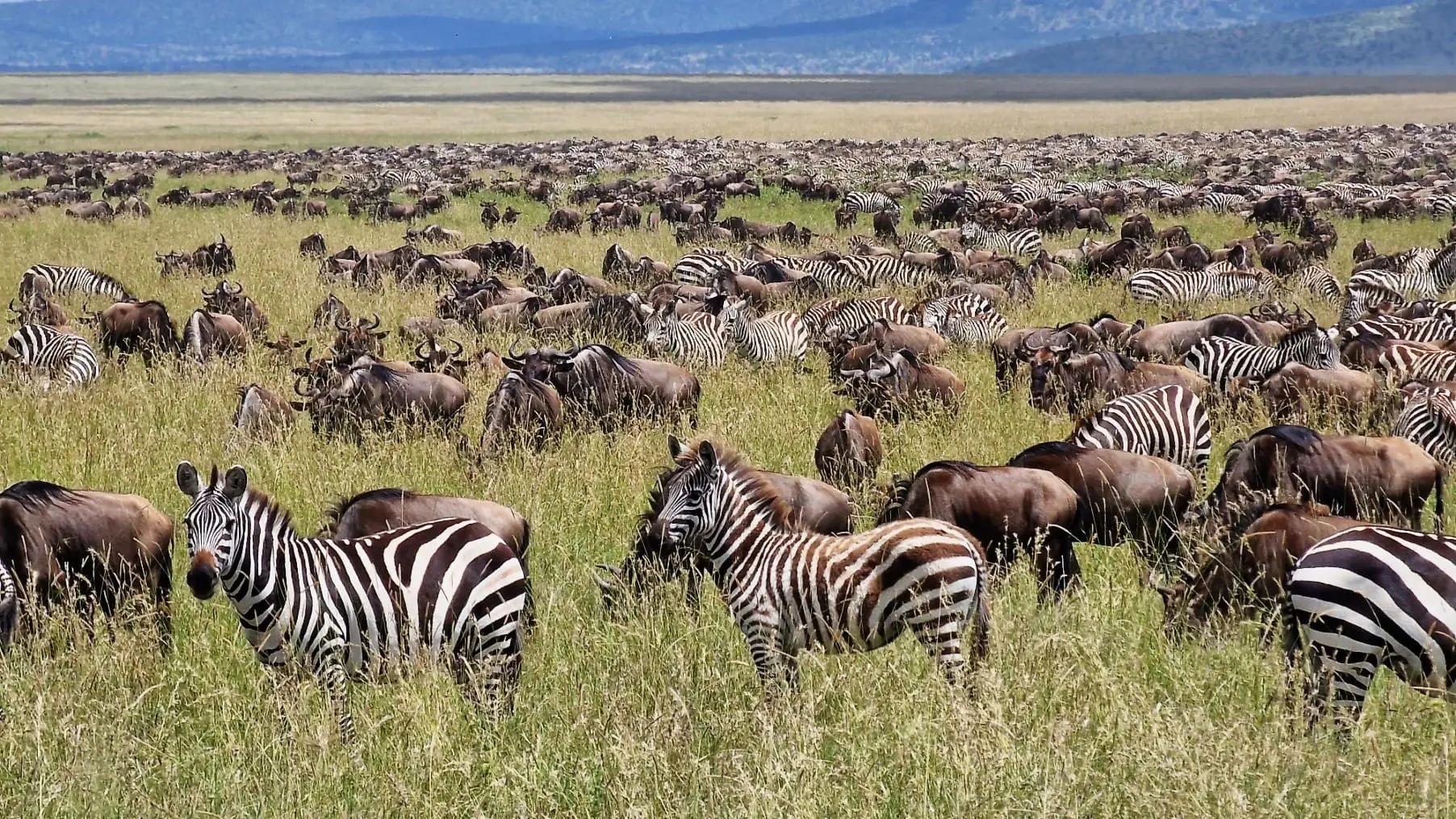
Your own safari roundtrip
Does reading this article make you want to see the Great Migration in real life? We make this possible through one of our safari tours. Check out our page for existing trips or get in touch to see if we can put together a trip just for you. All of our accommodations and drivers are owned by us, ensuring a unique Tanzania safari in which you can admire the Great Migration.

